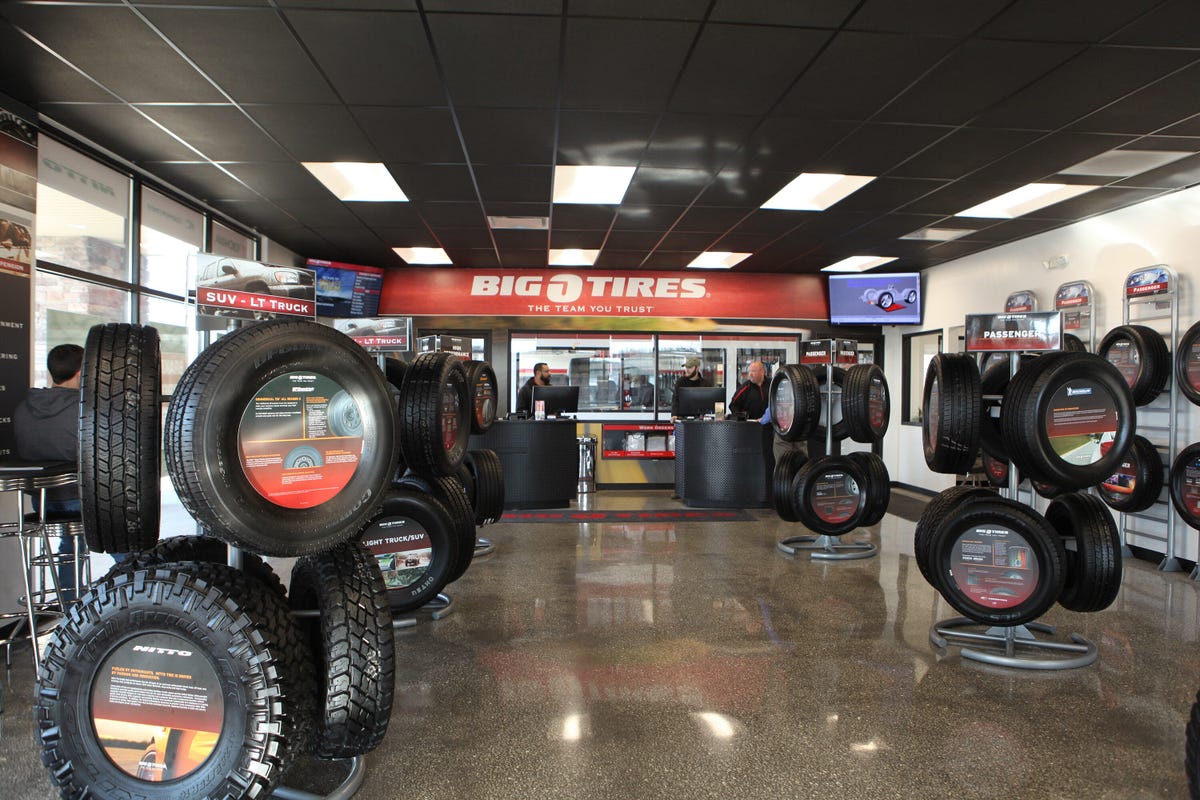Browse Safely with Tire Tracks Morris IL: Premier Tire Shop Near Me
Browse Safely with Tire Tracks Morris IL: Premier Tire Shop Near Me
Blog Article
The Science Behind Tire Repair Service and Safety And Security
When it involves the detailed globe of tire upkeep and safety and security, there exists a world of science that commonly stays undetected by the typical motorist - morris tire. The materials that make up a tire, the influence of tire pressure on overall safety, the implications of tread wear, the elaborate dynamics of tire grip, and the often-overlooked importance of proper wheel positioning all play essential duties in making certain a lorry operates safely and efficiently. As we navigate with the intricacies of tire repair work and security, it ends up being noticeable that a deeper understanding of these scientific principles is not just valuable however vital for every driver when traveling
Tire Structure and Functionality
What materials make up the make-up of tires, and just how do these elements contribute to their capability when traveling? Tires are intricate products, usually made from a mix of rubber compounds, textile, steel cords, and other chemical ingredients. One of the most usual kind of rubber made use of in tires is synthetic rubber, which offers resilience and resistance to tear and use. The textile layers, typically constructed from polyester, rayon, or nylon, provide toughness and security to the tire framework. Steel cables are incorporated to improve the tire's strength and assist it keep its shape under various road problems.
The rubber substances provide grasp and grip, enabling the tire to stick to the roadway surface area and provide security during acceleration, braking, and cornering. Generally, the mindful selection and combination of these products ensure that tires can do efficiently and securely on different road surfaces and problems.
Effect of Tire Pressure on Safety And Security
On the other hand, overinflated tires have less contact with the roadway surface area, reducing grip and triggering unequal wear on the tire footsteps. Correctly inflated tires likewise play a crucial function in gas efficiency, as underinflated tires can increase rolling resistance, leading to lowered gas mileage. Routinely examining and maintaining the appropriate tire stress not only guarantees safety and security but likewise expands the life expectancy of the tires, saving on substitute costs in the lengthy run.
Tread Use and Its Effects
Appropriate tracking of tire step wear is important for ensuring ideal performance and security when traveling. As tires put on down, the deepness of the walk lessens, lowering the tire's capacity to maintain grip, particularly in wet or unsafe conditions. The walk pattern and depth play an essential duty in directing water far from the tire to stop hydroplaning and preserving hold on the road surface.
Indicators of extreme step wear consist of hairless areas, uneven wear, and the look of wear signs. Bald spots show local wear, which can cause instability and enhanced threat of blowouts. Uneven wear might recommend problems with tire rising cost of living, suspension, or alignment elements. Wear indications are built right into the tire tread and end site up being noticeable when the walk deepness gets to a certain nadir, indicating the demand for prompt substitute.

Recognizing Tire Traction Dynamics
Checking tire tread wear not just guarantees optimum efficiency and security but likewise straight influences the grip characteristics of the tires on different roadway surface areas. Tire traction is an important aspect of automobile handling and safety, as it determines the hold in between the tires and the road. Traction characteristics vary depending upon road conditions such as dry pavement, damp roadways, snow, or ice.

Understanding tire traction characteristics is crucial for motorists to adjust their driving habits according to the road problems. tire tracks morris il. Consistently inspecting tire tread deepness and condition can significantly boost traction efficiency, guaranteeing safer driving experiences throughout numerous surfaces
Value of Proper Wheel Alignment
Making sure right wheel positioning plays an important duty in optimizing vehicle performance and prolonging tire long life. Appropriate wheel placement involves readjusting the angles of the wheels to manufacturer specs, making sure that they are vertical to the ground and parallel to each other. When positioning is off, it Visit This Link can result in unequal tire wear, reduced fuel effectiveness, and jeopardized handling.
One of the essential benefits of maintaining correct wheel placement is improved taking care of and stability. Misaligned wheels can create the vehicle to pull to one side, impacting steering control and total driving experience. Furthermore, proper alignment promotes even tire wear, preventing early tire replacement and saving on upkeep expenses in the future.

Verdict
Finally, the science behind tire repair and safety is essential for preserving vehicle efficiency and making certain motorist security. By understanding tire composition, pressure, step wear, grip characteristics, and wheel placement, chauffeurs can protect against crashes and prolong the lifespan of their tires. Appropriate maintenance and normal inspections are necessary for ideal tire efficiency and total car safety and security. By following these standards, vehicle drivers can drive confidently understanding that their tires remain in good condition.
The products that make up a tire, the influence of tire stress on overall safety and security, the implications of step wear, the complex characteristics of tire traction, and the often-overlooked significance of appropriate wheel positioning all play crucial roles in making certain a lorry operates securely and efficiently. On the other hand, overinflated tires have less call with the roadway surface area, decreasing grip and creating uneven wear on the tire treads. Routinely inspecting and keeping the correct tire pressure not just ensures safety and security but likewise expands the lifespan of the tires, conserving on substitute prices in the long run.
Monitoring tire step wear not only makes certain ideal performance and safety and security however likewise straight affects the grip dynamics of the tires on different road surfaces. Tire traction is a vital facet of automobile handling and safety and security, as it determines the grip between the tires and the road.
Report this page